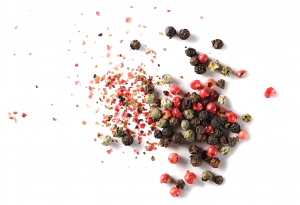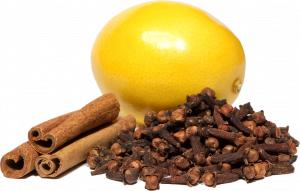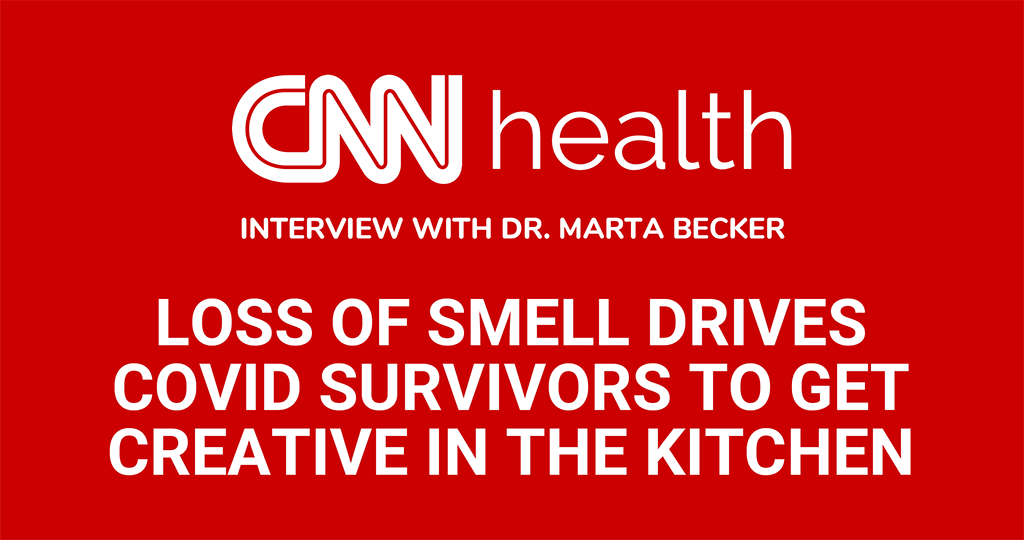Loss of smell and taste have emerged as common symptoms of COVID-19. In fact, they’re not just indicators of COVID but are early indicators. Many COVID patients report a loss of smell or taste without other accompanying symptoms, such as congestion or fever.
While most infected patients do recover within a few days to weeks, some may need many months before recovering their sense of smell and, for others, it may never return.
A complete loss of smell is referred to as anosmia and it affects 1-2% of Americans – more men than women. Causes can include sinus infections, nasal polyps, and aging to name a few. With COVID, however, the percentage of people that experience some sort of smell loss skyrockets to 85%. Most people recover within 2-3 weeks; however, 25% lose their sense of smell for more than 2 months and 5% lose it for more than 6 months. Interestingly, those with some form of smell loss had milder cases of COVID while those who did not lose their sense of smell experienced more severe symptoms.
It’s not your sense of taste that’s not working, it’s your sense of smell
 Recently, a COVID patient who lost her sense of taste and smell spoke with CNN Health about her altered eating habits. She stopped eating eggs and bleu cheese because she couldn’t taste them and didn’t like the textures. Instead, she began eating lemon-dill hummus with Kalamata olives and toasted naan with spicy oil on the side. She could taste the salt, pepper, and lemon and also enjoyed the crunchy textures.
Recently, a COVID patient who lost her sense of taste and smell spoke with CNN Health about her altered eating habits. She stopped eating eggs and bleu cheese because she couldn’t taste them and didn’t like the textures. Instead, she began eating lemon-dill hummus with Kalamata olives and toasted naan with spicy oil on the side. She could taste the salt, pepper, and lemon and also enjoyed the crunchy textures.
CNN Health asked Dr. Marta Becker, otolaryngologist with BergerHenry ENT, to weigh in. “Some sensations of our food — spicy hot pepper, mintiness — are things we experience with the hot and cold sensors of our mouth,” she said. “You can get the acid, heat, even saltiness, but not the layers of things like cilantro and chipotle.”
“Most of our sense of what we think of as taste,” Becker said, “isn’t really taste at all. All the interesting things about our food that we use to identify things like cheese and fruits and chocolate and coffee are not done with our mouth. They’re done with our nose. We don’t think it’s very common for people to actually lose their sense of taste (with Covid-19). If you really drill down, it’s the olfactory function in the nose that’s not working.”
When odors appear out of thin air
Some COVID patients report smelling phantom odors months after being diagnosed. Phantosmia is an olfactory hallucination that gives patients the sensation of an odor that’s not there. For example, many report smelling burnt toast, jet fuel, and cigarette smoke.
“A lot of people get trash, or smoke, something rotten or burning rubber. It’s really gross, but it’s usually a good sign that things are trying to sort themselves out. When recovery happens, sometimes the wires can get crossed.”
Doctors still don’t understand why COVID patients lose their sense of taste and smell but there’s a common belief that COVID affects the cells around nerve cells and not the nerve cells themselves. This makes recovery of taste and smell promising since these cells can regenerate easier than nerve cells.
Smell training to get your sense of smell back
 If your loss of smell persists, consider smell training (olfactory training). In many patients, it has resulted in improved smell and taste within 12-16 weeks.
If your loss of smell persists, consider smell training (olfactory training). In many patients, it has resulted in improved smell and taste within 12-16 weeks.
Dr. Becker recommends smell training to her patients and says that “retraining your brain to what things smell like so you can remember is a bit mysterious but using the memory to retrain the neurons can work in both directions. The memory can help you smell, and the smell can help you remember.”
Smell training utilizes primary odors to retrain the nose and its nerves to come back to life. You can purchase essential oils or “just use the things you have to match that smell up with the memory of your smell,” she says.
Primary odors used to retrain your nose
How to smell train
You can probably find the things you need to smell train in your kitchen or backyard, i.e., garlic, cloves, lemons, menthols, and eucalyptus.
If you want to use essential oils, purchase only 100% pure and natural essential oils (lemon, rose, clove, eucalyptus) along with small, empty amber bottles (to keep light out) with screw caps. Dab a piece of paper with the essential oil and place it in one of the amber jars.
Smell each scent 2x/day for about 20 seconds. It’s important to only take small sniffs, just enough to pass the scent into the upper region of the nose where the olfactory bulb is located. (The olfactory bulb contains the nerve cells responsible for your sense of smell.) Aggressive smells can pass the scent into the lungs which is not needed. It’s fine if you smell train more than 2x/day.

